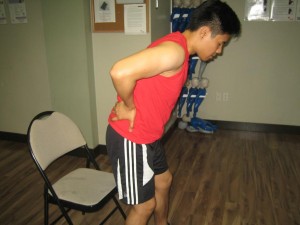An abdominal aortic aneurysm is characterized as balloon-like swelling of the aorta which is the major artery in the body. It is responsible for transporting oxygenated blood away from the heart to the entire body and the brain.
Abdominal aortic aneurysm occurs in the segment of the aorta that passes via the abdomen. The abdominal aorta is about 2cm in width. If an individual has an aneurysm, it can grow up to more than 5cm. This condition typically affects men and the risk is higher among those aged 65 and older.
What are the indications of abdominal aortic aneurysm?
A large-sized aneurysm can rupture and cause internal bleeding. Remember that this is a medical emergency that requires emergency assistance if the individual has any of these:
- Abrupt, intense pain in the abdomen or back
- Sweaty, clammy, feels cold and breathless

If an aneurysm becomes too big, it can trigger pain, persistent back pain and a pulsating sensation in the abdomen. - Loss of consciousness
In most instances, there are no evident symptoms and most with the condition are not even aware that they have one. Nevertheless, if an aneurysm becomes too big, it can trigger pain, persistent back pain and a pulsating sensation in the abdomen.
Management
In most cases, aneurysms are small and do not require treatment. Remember that they can grow, thus if an individual has abdominal aortic aneurysm, regular scans are required to monitor the size. If it grows, the risk for it to rupture is increased.
If the aneurysm grows larger than 5.5cm, it requires surgical intervention. The commonly used treatment options include the following:
- Surgery – this involves replacement of the affected segment of the aorta with a plastic tube. As a major operation, general anesthesia is required and hospitalization can last for a week until full recovery is reached.
- Endovascular repair – this is a form of keyhole surgery which involves the placement of a stent-graft within the artery via a small incision in the groin. The individual should be able to get up and walk the next day. Most can go home in 2-3 days after.
Possible causes
It is not precisely known what causes abdominal aortic aneurysm but it is associated to atherosclerosis and the accumulation of fatty material in the arteries. The highest risk factors include the age and being male as well as having a family history.
Certain factors that the individual can do something about include:
- Controlling the blood pressure
- Stop smoking
- Lower the cholesterol levels
- Maintain a healthy weight
Observing these measures can also minimize the risk for the abdominal aortic aneurysm to grow bigger if one is already present.

